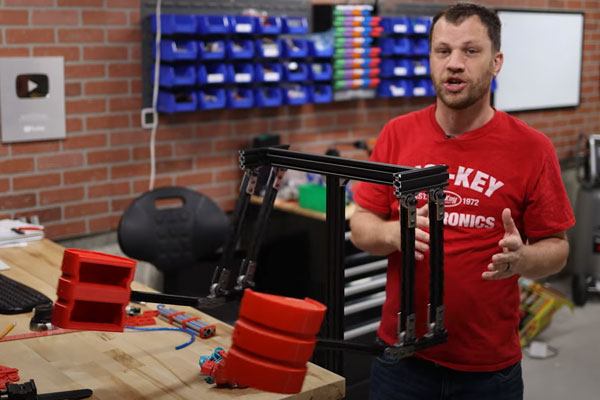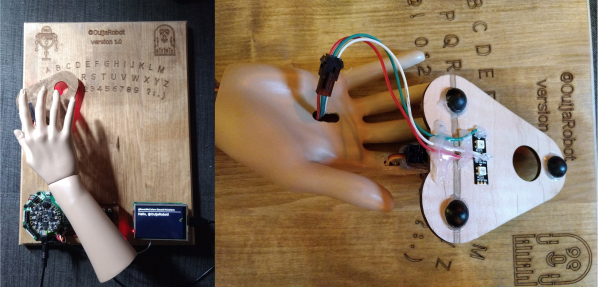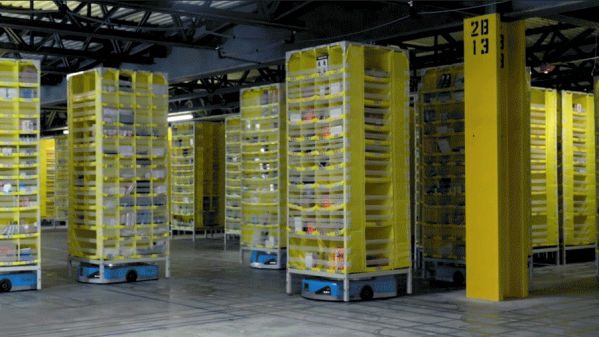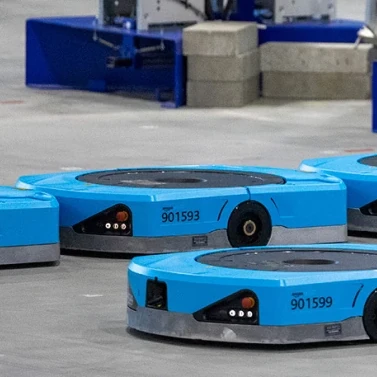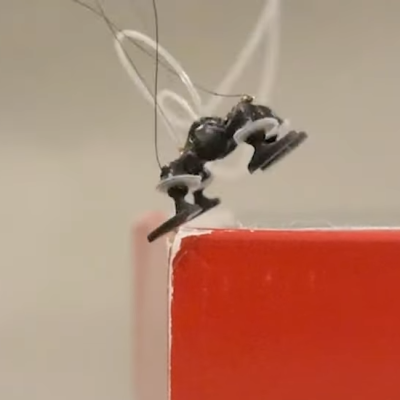Since the first combat robots emerged around three decades ago, it seems as though every conceivable configuration has been tried at some point or other. Whether it’s a two-wheeled wedgebot, a walker, a four-wheeled flip-bot, or whatever, someone’s already been there. But how about a self-righting taco with a novel two-wheel drive system? It’s called Taco Tuesday, its team lead [Carter Hurd] has sent us the video below the break, and it’s worth a second look because the technique might find a place outside the arena.
So what exactly is novel about this bot? It has a single big fat wheel near the front in a longitudinal direction, and a larger slimmer one at the back in a transverse direction. The former wheel propels it around the arena while the latter wheel acts as a rear-wheel steering system, allowing it to pivot round and face an attacker very quickly indeed.
It’s this maneuverability which we think could find an application in other machines, though the same problem they have of sideways friction on that rear wheel would need to be overcome.
The video follows the bot through a BattleBots competition in Las Vegas, and shows us some of the damage they receive in combat. The drive system needs a bit more refinement, but this outing certainly proves it has plenty of potential.
Some of us here at Hackaday have a bit of a soft spot for fighting robots.
Continue reading “Just When You Think Everything In Robotic Combat Has Been Tried Before…”

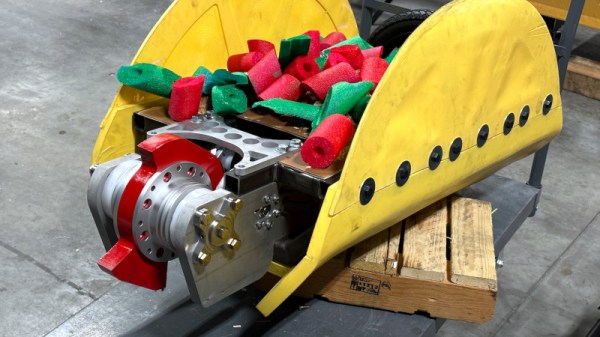
![The robot with [Carter] sitting behind it](https://hackaday.com/wp-content/uploads/2023/10/taco-tuesday-drive.jpg?w=329)


